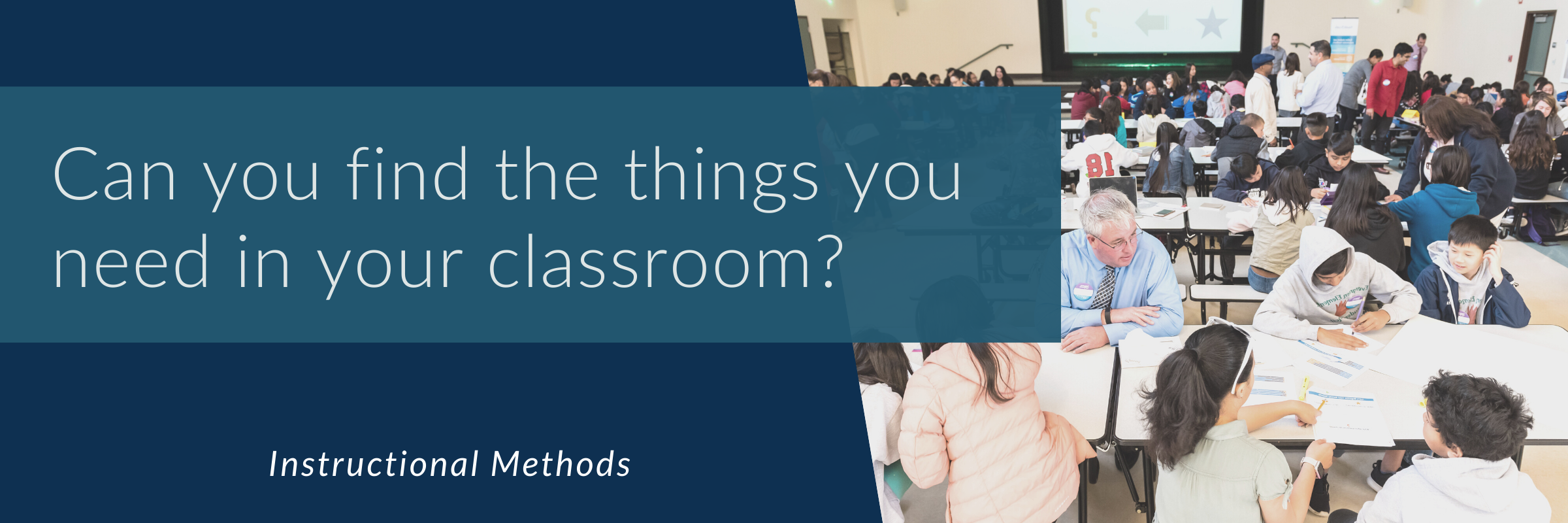
Why does it matter?
The learning environment has famously been called a student’s “third teacher” (after adults and peers). The question “Can you find the things you need in your classroom?” tells us as educators whether our classrooms have the right tools in the right places.
Eight tips and tricks to redesign your classroom
Is your classroom space designed to promote creativity and collaboration? Is it organized to encourage a smooth workflow? Here are some recommendations from Edutopia from the former educator and expert classroom designer, David Bill. Here’s a quick overview of recommended strategies. To learn more, follow the link below.
Tips that get students involved
Student-defined pain points
Ask students periodically if there’s anything unsatisfying or cumbersome about the current set up of a classroom — and then enlist them to help solve the problems! One possible strategy to probe students’ thinking as they solve the problem is to ask them to write down how they feel or act in certain parts of the classroom on a sticky note.
10 x 10 x 10
Collaboratively brainstorm several questions with students that cover the goals of your classroom redesign. Then, have students talk with or interview different people (Bill suggests having students talk to 10 — we’ll leave this to your discretion) about how to improve the space.
Student helpers
Make sure that students play a role in both a classroom’s redesign and its future upkeep. For example, they might paint shelves and make a chore list!
Research and brainstorming methods
Here are some process suggestions for getting students involved in identifying problems and finding solutions in order to make the classroom a more workable learning space for them!
Classroom flow
Find a colleague or student who has a free period when you teach, and ask him or her to come and observe how you and your students move about the classroom. Print a diagram of the classroom, and as your observer watches, have him or her draw where you and your students move. One color should be used for tracing your movement and another for the students’ movement. The sheet of paper with the tracking will help you determine what areas are used most heavily, and where items should be placed to better support fluid movement through your classroom.
Sticky notes
Have participants draw or write an idea related to the need on sticky note. Define the need. For example: “Students have difficulty finding the right books for them in our library.” For each focal point, have participants draw or write an idea related to the topic on sticky note. The ideas should be posted on a whiteboard. When all the ideas are on the board, they should be sorted and grouped to determine which ideas overlap and which can move forward. These brainstorming rules and guidelines will be helpful in setting up such an experience.
